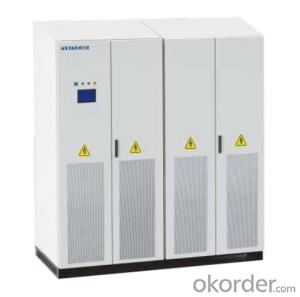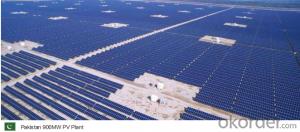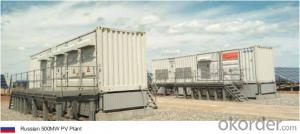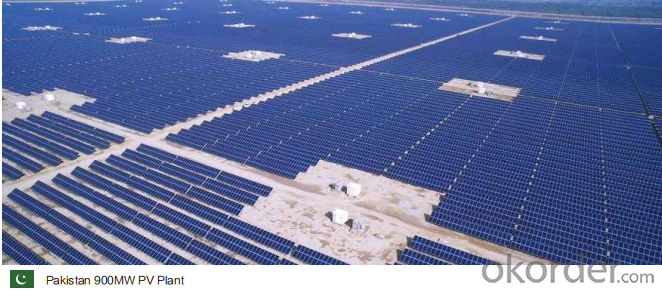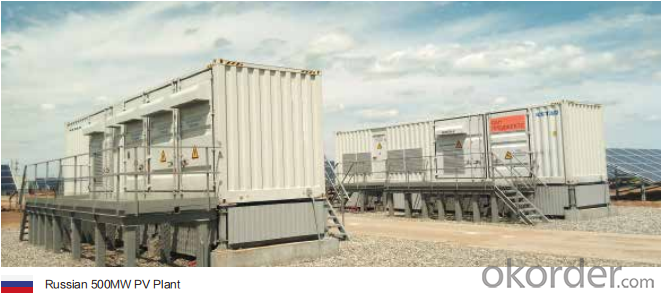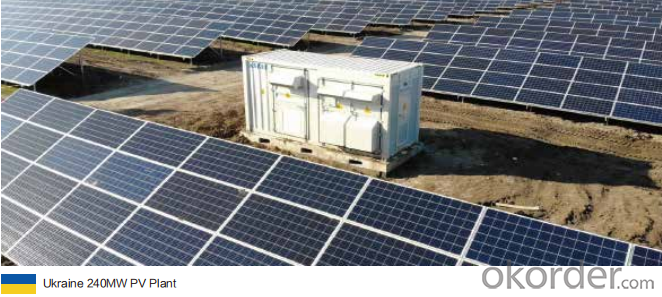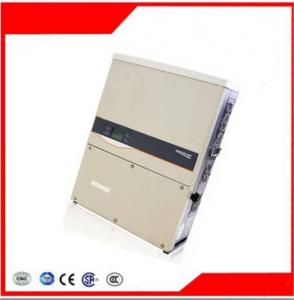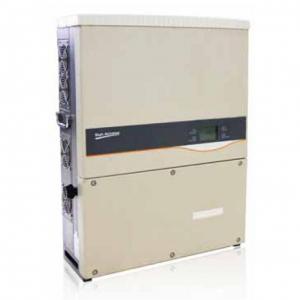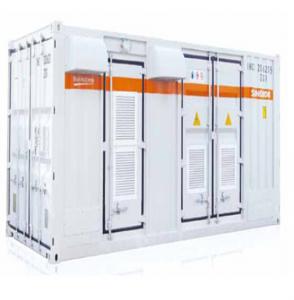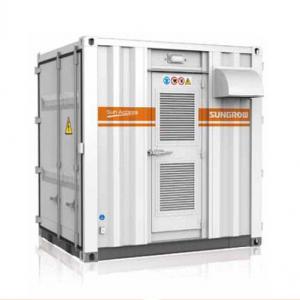50 Amp Solar Inverter - Central Grid-Tied High Efficiency PV Inverter GSL1000 / GSL1250
- Loading Port:
- China main port
- Payment Terms:
- TT OR LC
- Min Order Qty:
- 50 pc
- Supply Capability:
- 15000 pc/month
OKorder Service Pledge
OKorder Financial Service
You Might Also Like
Specification
Product Description:
★Max. PV voltage up to 1000V Max. 20 DC inputs
★Dustproof protection Modular design for Easy maintenance
★Max. DC/AC ratio up to 1.5 Full power output under 55℃
★AGC/AVC Night SVG function LVRT/HVRT/FRT function
Technical Specifications:

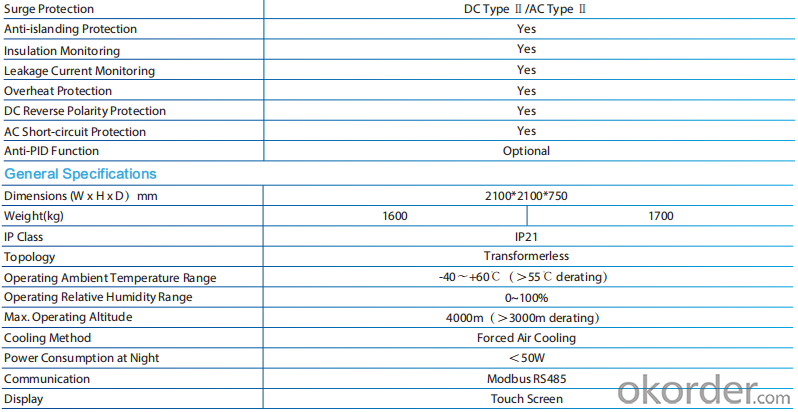
FAQ:
Q:How the output voltage of the PV inverter and the grid-connected voltage are determined
Inverter is the DC power (battery, battery) into alternating current (usually 220V, 50Hz sine wave). It consists of inverter bridge, control logic and filter circuit. Widely used in air conditioning, home theater, electric wheel, power tools, sewing machines, DVD, VCD, computer, TV, washing machine, range hood, refrigerator, video recorders, massage, fan, lighting and so on. In foreign countries
Q:Installation and maintenance of photovoltaic grid - connected inverter
only when the local power sector permission by the professional and technical personnel to complete all the electrical connection before the inverter can be connected.
Q:What is the difference between a PV grid-connected inverter and an off-grid inverter?
Off-grid inverter is equivalent to their own to establish an independent small power grid, mainly to control their own voltage, is a voltage source.
Q:After the PV inverter, how to achieve the same period before the network?
Solar panel simulator: with MPPT function, simulated morning, noon, afternoon, evening, rainy weather, solar panels produced under different conditions in different voltages.
Q:Is the PV inverter a current source or a voltage source?
According to the waveform modulation method can be divided into square wave inverter, stepped wave inverter, sine wave inverter and modular three-phase inverter.
Q:Photovoltaic grid-connected inverter without DC emc how will happen
Solar photovoltaic power generation technology is the use of solar cells, the photovoltaic effect of semiconductor materials, solar radiation can be directly converted into a new type of power generation system, solar energy is a radiant energy, solar power means --- to direct conversion of sunlight Into electricity,
Q:What is the difference between low voltage grid connection and medium voltage grid connection?
For photovoltaic power plants when the power system accidents or disturbances caused by photovoltaic power plant grid voltage drop, in a certain voltage drop range and time interval, the photovoltaic power plant can ensure that non-off-line continuous operation.
Q:Is the grid side of the grid and the inverter?
The grid load side of the grid is the grid. The inverter is an important part of the PV grid-connected system and can not be regarded as an external load. Photovoltaic power generation system is included in both grid and off-grid.
Q:PV grid-connected inverter and independent inverter in the control of what is the difference
The independent inverter in the output voltage phase amplitude of the frequency control is initially set good. Independent inverter, you should refer to off-grid inverter, do not need to consider the grid situation.
Product Images:
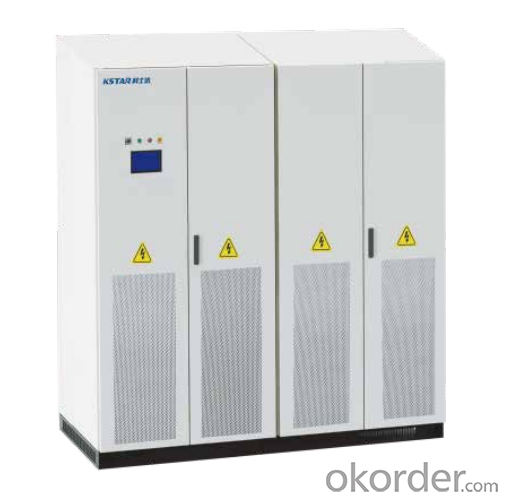
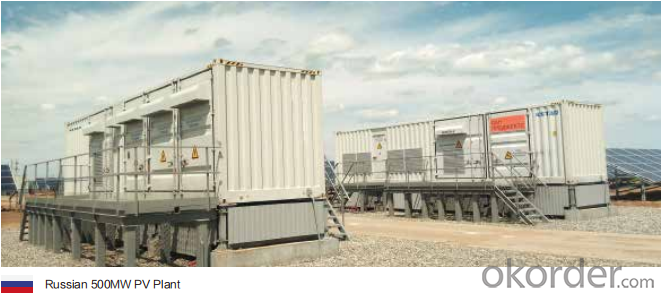
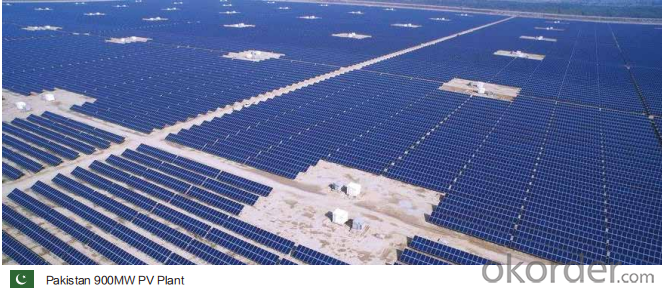
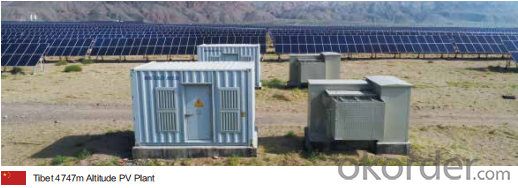

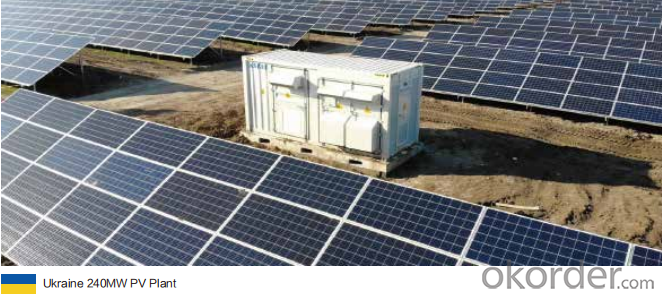
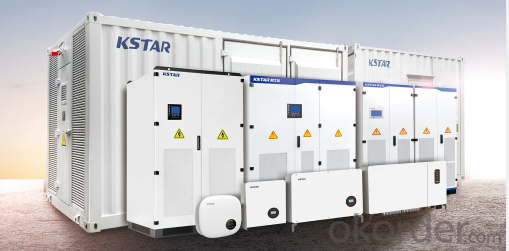
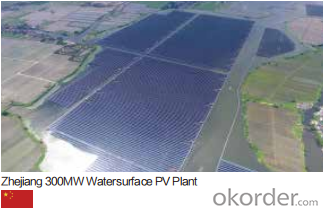
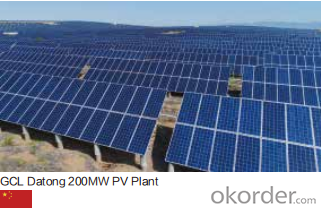
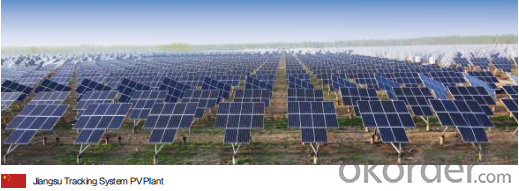
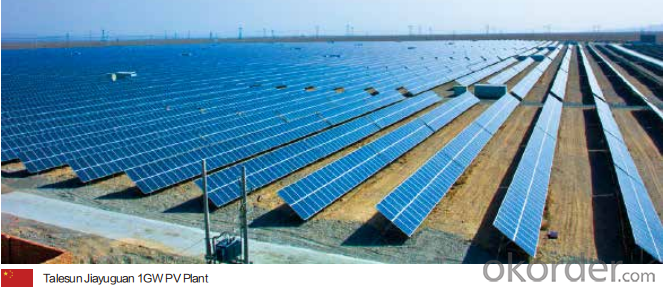
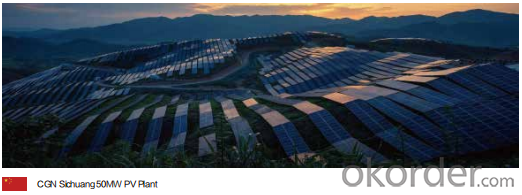
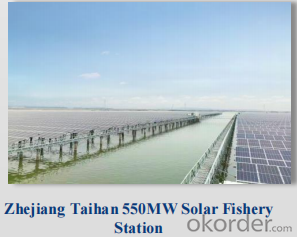



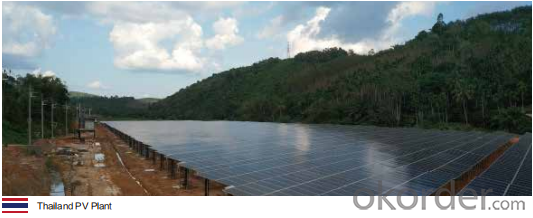
Production Process Photos:
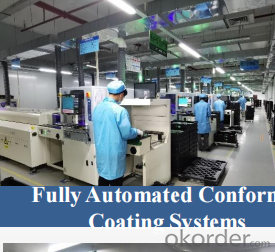

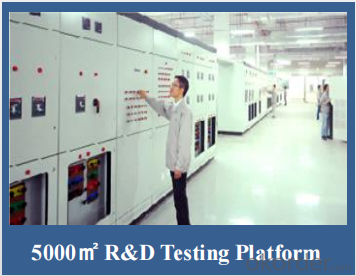

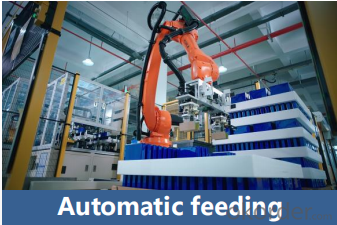
- Q: Can a solar inverter be used with a solar-powered greenhouse system?
- Yes, a solar inverter can be used with a solar-powered greenhouse system. A solar inverter is necessary to convert the direct current (DC) electricity generated by the solar panels into alternating current (AC) electricity that can be used to power the various components of a greenhouse system, such as fans, lighting, and irrigation systems.
- Q: How does a solar inverter affect the overall aesthetics of a solar installation?
- A solar inverter does not directly impact the aesthetics of a solar installation as it is typically installed indoors or in an inconspicuous location. However, a well-designed solar inverter system can contribute to a cleaner and more organized appearance of the overall solar installation by reducing the need for visible wiring and ensuring efficient energy conversion.
- Q: Can a solar inverter be used with different types of monitoring systems?
- Yes, a solar inverter can typically be used with different types of monitoring systems. Most modern solar inverters come with built-in communication interfaces that allow for seamless integration with various monitoring systems. These systems can range from basic monitoring apps provided by the inverter manufacturer to more advanced third-party monitoring platforms. As long as the monitoring system supports the communication protocol of the solar inverter, it can be used to monitor and manage the performance of the solar power system.
- Q: How does a solar inverter handle power factor optimization?
- A solar inverter handles power factor optimization by ensuring that the power generated by the solar panels is synchronized with the grid's voltage and frequency. It adjusts the power factor by actively controlling the flow of current between the solar panels and the grid, allowing for efficient power transfer and minimizing reactive power consumption.
- Q: What is the role of a grid protection relay in a solar inverter?
- The role of a grid protection relay in a solar inverter is to monitor the performance and safety of the grid connection. It helps to ensure that the solar inverter operates within the specified parameters and protects the grid from any potential issues such as overvoltage, undervoltage, or frequency deviations. The relay acts as a safeguard by quickly disconnecting the solar inverter from the grid in case of any abnormalities, preventing any damage to the inverter or the grid itself.
- Q: How does a solar inverter handle voltage sag and swell?
- A solar inverter handles voltage sag and swell by continuously monitoring the voltage levels of the solar panels and grid connection. When a sag or swell is detected, the inverter adjusts its output voltage accordingly to maintain a stable and consistent supply of power to the connected devices. This helps to protect the electrical equipment from potential damage and ensures efficient operation of the solar power system.
- Q: How does a solar inverter protect against short circuits?
- A solar inverter protects against short circuits by monitoring the electrical current flow and detecting any abnormal increase in current caused by a short circuit. Once a short circuit is detected, the inverter immediately shuts down the power output to prevent any damage to the solar panels, the inverter itself, or the electrical system.
- Q: What is the role of MPPT (Maximum Power Point Tracking) in a solar inverter?
- The role of MPPT (Maximum Power Point Tracking) in a solar inverter is to optimize the efficiency and output of the solar panel system. MPPT technology enables the inverter to constantly track and adjust the operating point of the panels, ensuring that they are operating at their maximum power point, where the highest power output is achieved. This allows the system to capture the maximum amount of energy from the sun, maximizing the overall efficiency and performance of the solar inverter.
- Q: How does a solar inverter communicate with monitoring systems?
- A solar inverter communicates with monitoring systems using various communication protocols such as Wi-Fi, Ethernet, cellular networks, or powerline communication. These protocols allow the inverter to transmit data such as energy production, system health, and performance metrics to the monitoring systems. This communication enables real-time monitoring, fault detection, and remote management of the solar system.
- Q: What is the role of ground fault protection in a solar inverter?
- The role of ground fault protection in a solar inverter is to detect and respond to any faults or abnormalities in the electrical system, specifically related to the grounding of the system. It ensures the safety of the inverter, the solar panels, and the overall electrical system by interrupting the flow of current in the event of a ground fault, preventing potential electric shock hazards and damage to the equipment.
Send your message to us
50 Amp Solar Inverter - Central Grid-Tied High Efficiency PV Inverter GSL1000 / GSL1250
- Loading Port:
- China main port
- Payment Terms:
- TT OR LC
- Min Order Qty:
- 50 pc
- Supply Capability:
- 15000 pc/month
OKorder Service Pledge
OKorder Financial Service
Similar products
Hot products
Hot Searches
Related keywords
